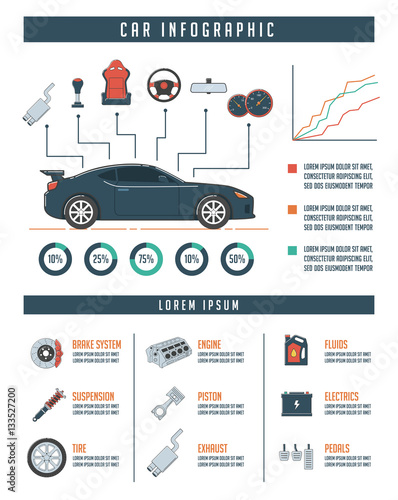Intrigued In Comprehending The Caution Lights On Your Cars And Truck'S Control Panel? Discover Their Value For Your Lorry'S Security And General Condition
Intrigued In Comprehending The Caution Lights On Your Cars And Truck'S Control Panel? Discover Their Value For Your Lorry'S Security And General Condition
Blog Article
Short Article Writer-Termansen Alvarado
When you're behind the wheel, those radiant caution lights on your control panel can be a bit difficult. Do car buff recognize what they're trying to inform you regarding your auto's health and wellness? Recognizing the significance of these lights is essential for your safety and security and the longevity of your vehicle. So, the following time among those lights appears, would not you wish to decipher its message properly and take the essential steps to resolve it?
Common Warning Lighting and Interpretations
Identify typical warning lights in your cars and truck and comprehend their significances to make certain safe driving.
The most normal warning lights consist of the check engine light, which indicates issues with the engine or exhausts system. If mouse click the next article begins, it's crucial to have your lorry inspected quickly.
The oil stress alerting light suggests reduced oil stress, requiring immediate focus to stop engine damages.
A blinking battery light may recommend a defective billing system, possibly leaving you stranded otherwise attended to.
The tire pressure tracking system (TPMS) light informs you to low tire stress, affecting lorry stability and fuel performance. Overlooking this can bring about unsafe driving conditions.
The abdominal muscle light indicates a problem with the anti-lock braking system, endangering your capacity to quit swiftly in emergency situations.
Last but not least, the coolant temperature level warning light warns of engine overheating, which can result in serious damage otherwise fixed swiftly.
Understanding these typical caution lights will certainly help you address problems promptly and maintain safe driving conditions.
Significance of Prompt Focus
Recognizing the usual warning lights in your car is just the primary step; the importance of immediately resolving these cautions can not be stressed enough to ensure your safety when traveling.
When a caution light illuminates on your control panel, it's your cars and truck's means of connecting a potential issue that needs attention. Overlooking https://www.shawlocal.com/the-herald-news/features/2022/05/30/high-rent-forces-75-year-old-will-county-auto-repair-shop-to-shut-down-for-good/ can bring about a lot more extreme problems down the road, jeopardizing your safety and security and possibly costing you more out of commission.
Trigger focus to warning lights can avoid break downs and mishaps. For example, a flashing check engine light can suggest a misfire that, if left ignored, could cause damage to the catalytic converter. Addressing this immediately can save you from a pricey repair work.
Likewise, a brake system cautioning light might signify low brake liquid or used brake pads, important parts for your security when driving.
Do It Yourself Troubleshooting Tips
If you discover a warning light on your dashboard, there are a few DIY repairing ideas you can attempt prior to seeking specialist aid.
The first step is to consult your car's handbook to comprehend what the particular warning light indicates. In some cases the problem can be as straightforward as a loosened gas cap causing the check engine light. Tightening up the gas cap might solve the problem.
One more typical concern is a low battery, which can activate numerous alerting lights. Inspecting the battery links for deterioration and guaranteeing they're safe and secure might fix the trouble.
If a warning light continues, you can attempt resetting it by disconnecting the car's battery for a few minutes and afterwards reconnecting it. Furthermore, examining your vehicle's liquid levels, such as oil, coolant, and brake fluid, can aid fix cautioning lights connected to these systems.
Conclusion
To conclude, recognizing your vehicle's warning lights is important for maintaining your vehicle running efficiently and securely. By without delay addressing these signals and understanding what they mean, you can prevent costly repairs and prospective break downs.
Bear in mind to consult your vehicle's guidebook for certain information on each alerting light and take action appropriately to make sure a trouble-free driving experience.
Stay informed, stay secure when driving!
